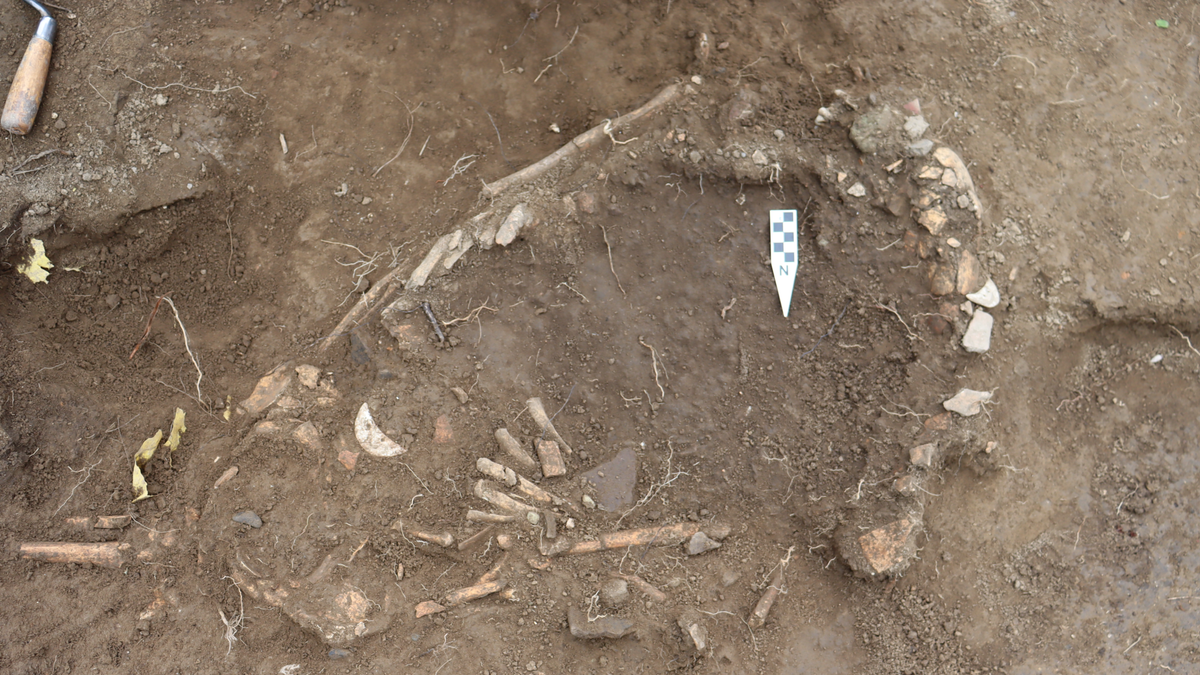Archaeologists excavating in Ecuador have discovered the rich burial of a pregnant woman and fetus who died around 1,200 years ago. But the woman’s bones revealed that she was bludgeoned and dismembered and that another person’s head and burnt offering were placed in the grave, which led archaeologists to suspect she was sacrificed.
“The fact that it was a woman who was pregnant might indicate that women held important positions of power, and thus their power needed to be ‘managed,'” Sara Juengst, a bioarchaeologist at the University of North Carolina at Charlotte, told Live Science in an email.
In a study published Thursday (Jan. 23) in the journal Latin American Antiquity, Juengst and colleagues detailed this “enigmatic” burial made during the Manteño period (650 to 1532) of Ecuador’s history, which is characterized by complex chiefdoms of coastal people who engaged in agriculture and seafaring and were known to the nearby Inca.
Of the six graves that Juengst and colleagues excavated at the site of Buen Suceso, the one with the pregnant woman stood out as strikingly different.
The young woman, who was roughly 17 to 20 years old, was seven to nine months pregnant when she died, and radiocarbon dating placed her death between 771 and 953. Fractures on her skull suggested that she may have died from a blow to the front of her head. Around the time of her death, someone also violently removed the woman’s hands and left leg.
Related: ‘An offering to energize the fields’: 76 child sacrifice victims, all with their chests cut open, unearthed at burial site in Peru
Human sacrifice was rare for coastal Ecuadorian peoples, the researchers noted in their study. But the items included in the grave made the burial even more unique.
An elaborate array of artifacts buried with the woman included cockle shells placed on her eye orbits, crescent-shaped ornaments made of Spondylus mollusk shells and three obsidian blades around her body, and a crab claw placed on her abdomen. Several of the mollusk shell artifacts were 2,000 years older than the burial and would have been extremely valuable trade items, Juengst said.
Additionally, the skull of a 25- to 35-year-old person had been left in the grave near the pregnant woman’s shoulder, and a burnt offering was placed on her chest. Radiocarbon dating of the burnt material showed it was deposited in the grave between 991 and 1025, potentially several centuries after the woman’s death.
The sacrifice is especially interesting, Juengst said, because of the contradiction between the “dehumanizing and disempowering” way she was killed and the fact that her grave was full of rich trade goods.
The placement of the artifacts around the woman’s body and on her abdomen “suggests protection and special treatment for her and her fetus,” Juengst said, especially since Spondylus “is associated with fertility and water, and it was prized by many South American cultures.”
In the study, the researchers outlined two scenarios that could explain the woman’s death and burial.
Given that the woman died during a period of intense El Niño events, which would have caused issues with crop yields, she may have been sacrificed due to her literal fertility, in the hope of ensuring agricultural success. Many of the artifacts she was buried with evoked watery environments, the researchers noted in the study, further suggesting a link with important natural resources.
But burial patterns within Manteño society also suggested that women had an unusually high amount of political and social power. “If a rival of this woman wanted to take over,” Juengst said, “they would need to eliminate her and her unborn offspring, but also still give her honor based on her status.”
Benjamin Schaefer, a bioarchaeologist at the University of Illinois Chicago who was not involved in the study, told Live Science in an email that “the distinctive mortuary treatment is noteworthy, but I remain cautious about definitively interpreting it as evidence of sacrifice.” Schaefer suggested that future data may strengthen the study’s conclusions, “offering deeper insights into a potentially unique sacrificial practice associated with the Manteño.”
The researchers noted that, regardless of the burial scenario, the discovery “prompts us to explore new ideas in Ecuadorian archaeology,” particularly how “environmental and social factors contributed to the sacrifice and treatment” of the pregnant woman and her fetus.














